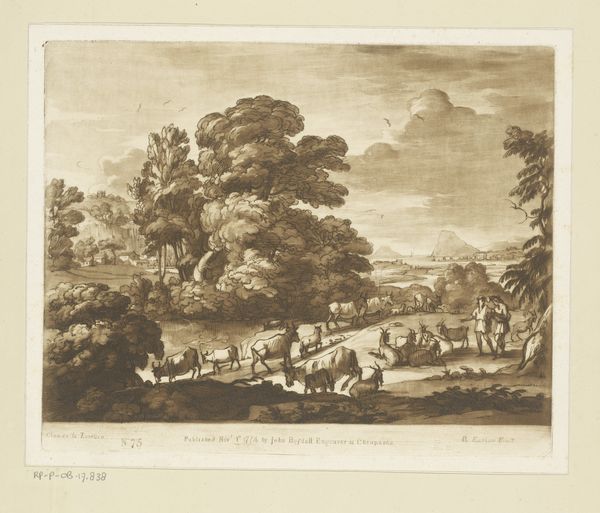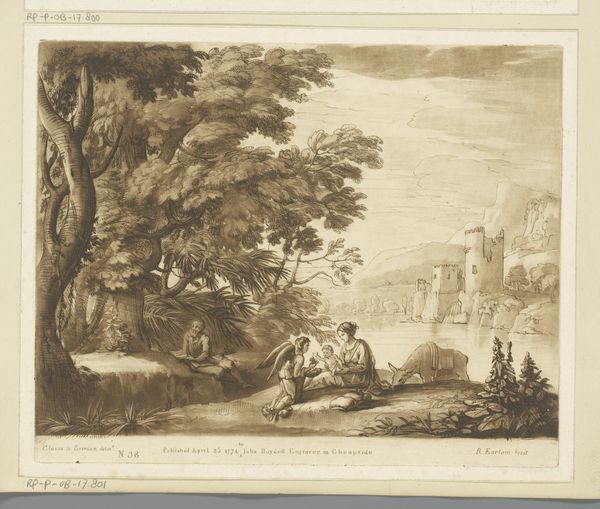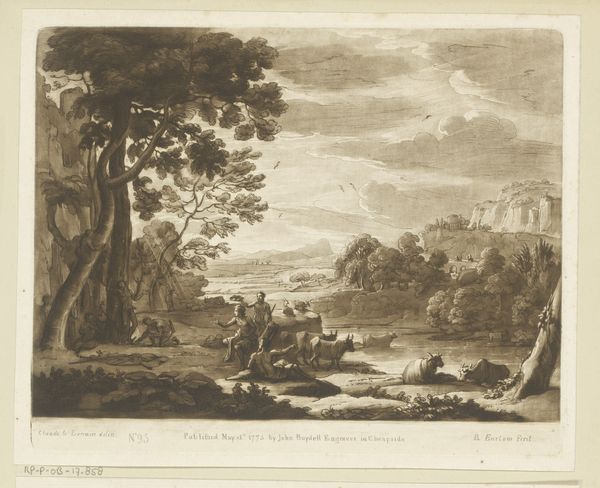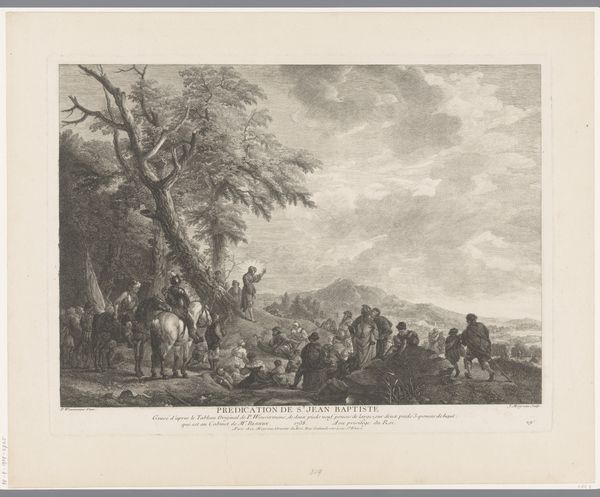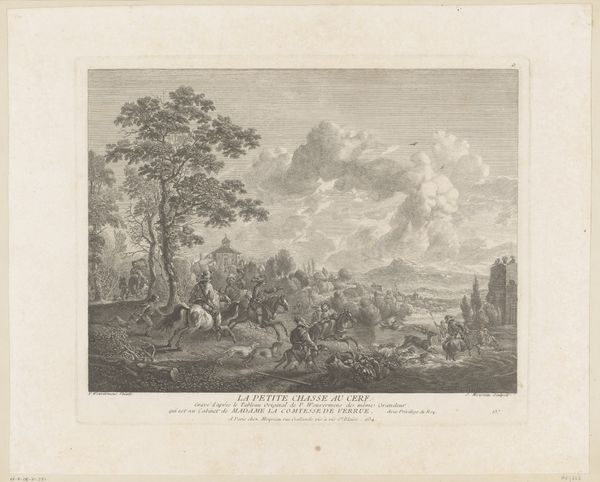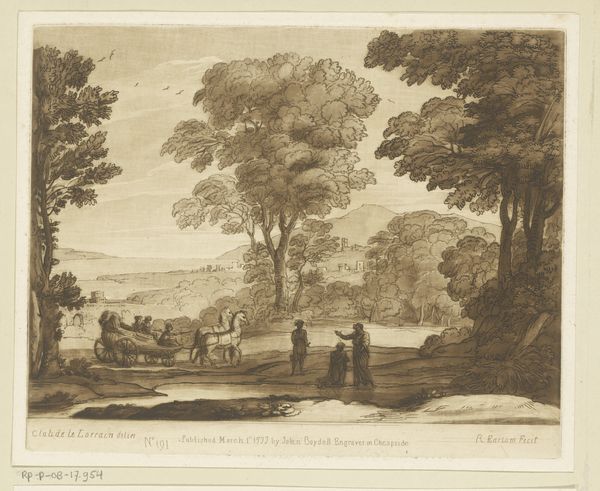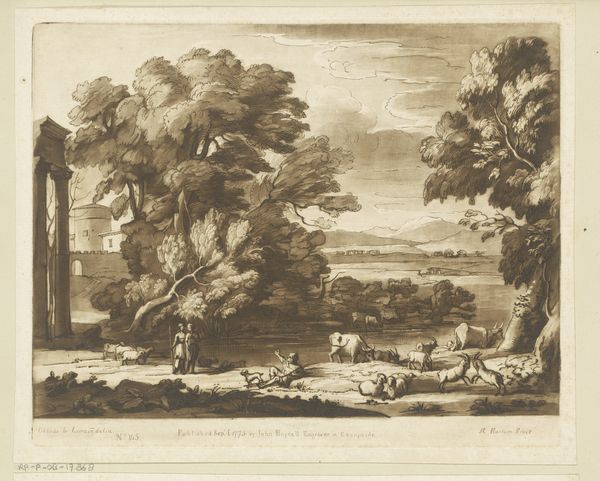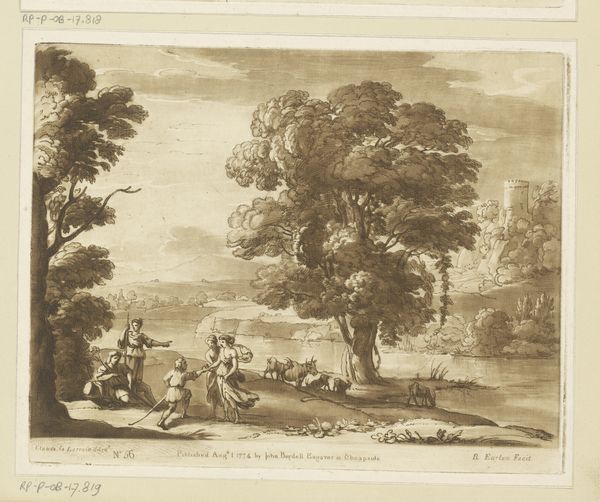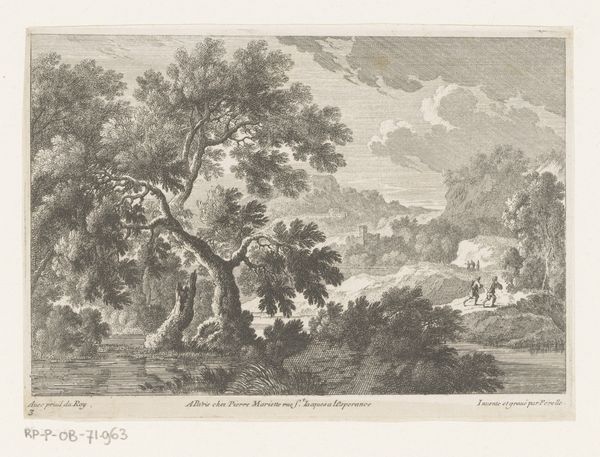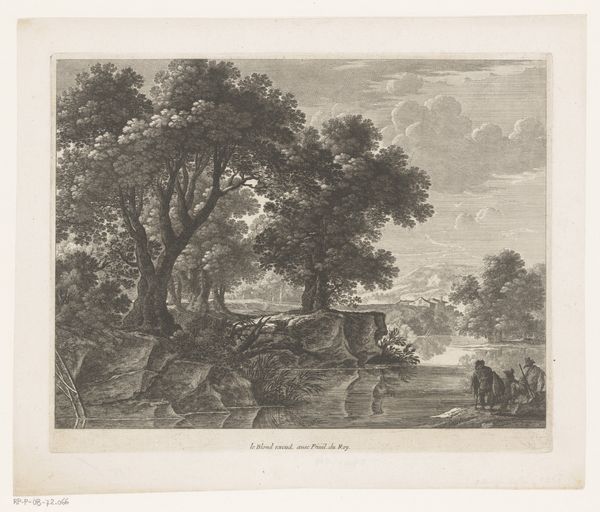
Heuvelachtig landschap met vee en drie musicerende herders Possibly 1774
0:00
0:00
richardearlom
Rijksmuseum
Dimensions: height 207 mm, width 256 mm
Copyright: Rijks Museum: Open Domain
Curator: "Heuvelachtig landschap met vee en drie musicerende herders"—that’s “Hilly Landscape with Cattle and Three Music-making Shepherds,” attributed to Richard Earlom, possibly dating to 1774. It’s an engraving currently held in the Rijksmuseum collection. It strikes me as quite idyllic at first glance, a carefully rendered pastoral scene. Editor: I’m drawn in by the interplay of light and shadow; it's quite theatrical. The grouping of the figures, particularly the musicians, lends the image an almost classical sensibility, like a stage tableau, perhaps inviting commentary on social dynamics. Curator: Indeed. Earlom, known for his reproductions, worked within the context of the Enlightenment’s burgeoning interest in classical themes and the picturesque. These images circulated widely, influencing ideas about nature and its role in society. Think about the aristocracy trying to recapture Arcadia. Editor: It makes me wonder about accessibility then. This wasn't art for everyone, was it? Were these images deployed to further establish societal hierarchies by emphasizing idealized rural life and reinforcing particular values tied to class and land ownership? The figures’ seemingly carefree existence becomes problematic in that context. Curator: That's an excellent point. The market for these prints served specific socio-economic strata. However, within the image itself, you can discern a kind of imagined community: the shepherd musicians playing, the cattle peacefully grazing...there’s an imagined harmony within the social and natural order, a vision not necessarily reflective of the actual lived experiences of rural communities. Editor: And the role of the “artist” in constructing and mediating this image, how it reflects both individual sensibility and larger social mandates about the visual representation of labour, leisure, and societal harmony—it begs the question of what these visual codes and this artistic labor serve. There's a political charge inherent in the aesthetic choices made here. Curator: It is complex. Ultimately, Earlom’s engraving represents more than a simple landscape. It provides a glimpse into the social, economic, and artistic discourses circulating during its creation, making it a compelling artifact. Editor: Absolutely. And understanding that layered context helps to interrogate its underlying assumptions and reimagine its role within our current cultural landscape.
Comments
No comments
Be the first to comment and join the conversation on the ultimate creative platform.
